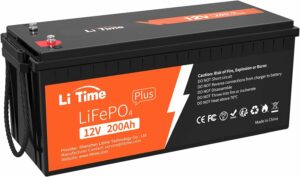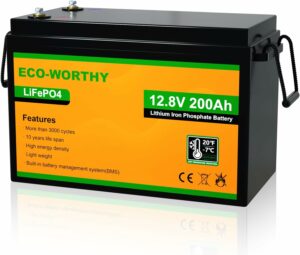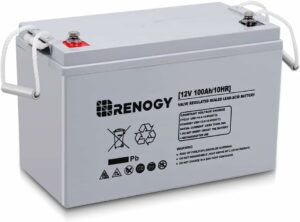Deep Cycle Solar Battery
Introduction
Deep-cycle solar batteries are crucial in harnessing and storing solar energy for various applications.
Unlike conventional batteries designed for short bursts of high energy, deep-cycle batteries are specifically engineered to provide a steady, consistent output over an extended period.
Provo Green Products embodies a beacon of trust in sustainable discoveries, offering choices that enhance your life and leave a positive mark on our planet.
Leveraging extensive expertise in manufacturing, construction, and various trades, we provide a solid foundation for sustainable living.
Our meticulous research process guarantees that our information about each product is precise and current, allowing you to make informed decisions.
Whether your interest lies in solar products, electric bikes, or other eco-friendly alternatives, our commitment to credibility ensures you have access to dependable insights, guiding your journey toward a more sustainable lifestyle.
Provo Green Products is your go-to destination for finding the right green products for your lifestyle.
Disclosure: We may earn a small commission if you click on one of our links. This will not affect the pricing of the product whatsoever.
Key Components of Deep Cycle Solar Batteries
Deep-cycle solar batteries are intricate systems composed of several crucial components, each contributing to their performance, durability, and efficiency.
Understanding these components is essential for users seeking to optimize their solar energy storage solutions.
- Types of Deep Cycle Batteries:
Deep cycle solar batteries come in various types, each with unique characteristics and best-suited applications.
Common types include Flooded Lead Acid (FLA), Gel, and Absorbent Glass Mat (AGM) batteries. FLA batteries are known for their affordability, while Gel and AGM batteries offer maintenance-free options with improved safety features.
The choice of battery type depends on cost, maintenance preferences, and specific energy system requirements.
- Electrolyte and Plate Materials:
The internal structure of deep cycle batteries includes an electrolyte and plates.
The electrolyte, typically composed of sulfuric acid, facilitates the flow of electrons between the battery’s positive and negative terminals during charging and discharging cycles.
The choice of plate materials, such as lead acid or variations like lead calcium, influences the battery’s overall performance, cycle life, and resistance to overcharging.
- Voltage and Capacity Considerations:
Deep cycle solar batteries are designed to provide a specific voltage output, commonly 6V, 12V, or 24V, depending on the configuration of cells within the battery.
Understanding the voltage requirements of the connected solar power system is crucial to ensure compatibility.
Additionally, the capacity of a deep cycle battery, measured in ampere-hours (Ah), dictates how much energy it can store.
Matching the battery’s capacity to the energy needs of the application is essential for optimal performance and longevity.
By comprehending the intricacies of these critical components, users can make informed decisions when selecting deep-cycle solar batteries for their specific applications.
The type of battery, the materials used in its construction, and its voltage and capacity characteristics collectively determine its suitability for various solar energy systems.
As users explore the market for deep-cycle batteries, this knowledge empowers them to choose the solution that best aligns with their energy storage requirements and preferences.
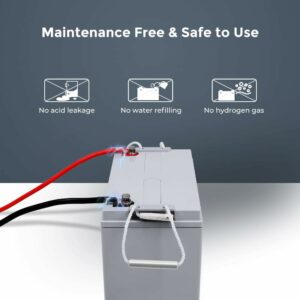
Advantages and Disadvantages of Deep Cycle Solar Batteries
Advantages:
Longevity and Durability:
- Deep-cycle solar batteries are designed to withstand numerous charge and discharge cycles. Compared to regular batteries, they exhibit exceptional longevity, making them a reliable and durable solution for solar energy storage. Proper maintenance can further extend their operational life.
Maintenance Requirements:
- While some maintenance is necessary, deep-cycle batteries generally require less upkeep than other battery types. Sealed options like Gel and AGM batteries eliminate the need for regular water refilling, simplifying maintenance for users who prioritize convenience.
Consistent Power Supply:
- Deep cycle batteries provide a steady and consistent power output, making them ideal for applications where a reliable energy supply is crucial. This trait is particularly beneficial for off-grid solar installations, ensuring uninterrupted power during periods of low sunlight.
Cost-Effectiveness:
- In terms of cost per cycle, deep-cycle solar batteries often offer good value for the investment. Their ability to endure multiple charge and discharge cycles over time contributes to their cost-effectiveness.
Disadvantages:
Initial Cost:
- Deep cycle solar batteries, incredibly advanced sealed types like Gel and AGM, may have a higher initial cost than traditional flooded lead-acid batteries. The upfront investment can be a significant consideration for users with budget constraints.
Weight and Size:
- Deep cycle batteries can be heavy and bulky, especially when high-capacity models are required for significant energy storage needs. This can pose challenges regarding installation, transportation, and the space required for the battery bank.
Sensitivity to Overcharging:
- Deep cycle batteries are sensitive to overcharging, which can lead to reduced lifespan and performance. Users must implement proper charge control mechanisms, such as charge controllers, to prevent overcharging and optimize battery health.
Limited Depth of Discharge (DoD):
- To maximize the lifespan of deep cycle batteries, avoiding deep discharges is recommended. While they are designed for deeper discharges than regular batteries, consistently discharging them to low levels can still impact their longevity.
Understanding these advantages and disadvantages empowers users to make informed decisions based on their specific requirements, budget considerations, and maintenance preferences.
Deep cycle solar batteries, when used appropriately, offer a reliable and efficient solution for storing solar energy in a wide range of applications.
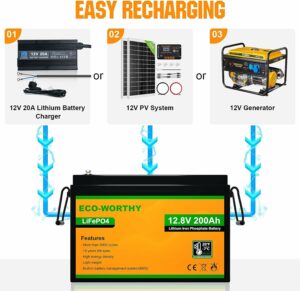
Selecting the Right DEEP-CYCLE Solar Battery for Your System
Choosing the appropriate deep-cycle solar battery is a critical decision that directly impacts a solar energy system’s performance, longevity, and efficiency.
Several key factors should be considered to ensure the selected battery meets the system’s requirements.
Matching Battery Capacity to Energy Needs:
Determining the energy needs of the application is the first step in selecting the correct deep-cycle solar battery.
Calculate the daily energy consumption and choose a battery with a capacity (measured in ampere-hours, Ah) that comfortably meets or exceeds these requirements.
This ensures a reliable and consistent power supply, especially during periods of low sunlight.
Compatibility with Solar Charge Controllers:
Solar charge controllers play a crucial role in regulating the charging process of deep-cycle batteries.
Could you ensure compatibility between the selected battery and the solar charge controller to optimize the charging and discharging cycles?
ifferent battery types may have specific voltage and temperature requirements, so it’s essential to choose a controller that aligns with the characteristics of the chosen battery.
Considerations for Off-Grid vs. Grid-Tied Systems:
The type of solar energy system—off-grid or grid-tied with backup capabilities—impacts the battery selection.
Off-grid systems rely entirely on stored energy, necessitating batteries with sufficient capacity to meet energy needs during periods of low solar input.
Grid-tied systems with battery backup, on the other hand, may prioritize quick discharge and recharge capabilities for short-term power outages.
Temperature Considerations:
Temperature affects the performance and lifespan of deep-cycle batteries. Some batteries are better suited to specific temperature ranges.
Please look at the installation location’s climate and choose a battery that can operate optimally.
Some advanced batteries have features like temperature compensation to enhance performance in varying climates.
Life Cycle and Warranty:
Could you look over the life cycle of the deep cycle battery, which indicates how many charge and discharge cycles it can endure before significant capacity degradation occurs?
Also, could you review the warranty provided by the manufacturer?
A more extended warranty often reflects the manufacturer’s confidence in the battery’s durability and performance.
By carefully evaluating these factors, users can make informed decisions when selecting a deep-cycle solar battery that aligns with their specific system requirements.
This proactive approach ensures that the chosen battery integrates seamlessly into the solar energy system, optimizing performance and contributing to the overall sustainability and reliability of the setup.
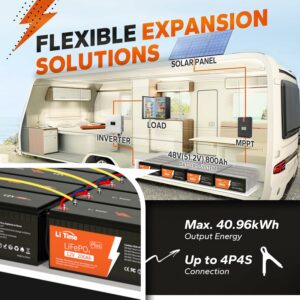
Maintenance Tips and Best Practices for Deep Cycle Solar Batteries
Regular Inspection and Testing:
- Regular inspection of deep-cycle solar batteries is crucial for identifying potential issues early. Inspect the battery terminals for corrosion, ensuring connections are clean and tight. Perform voltage and specific gravity tests periodically to assess the battery’s health. Monitoring the charge and voltage levels provides insights into the battery’s performance and can indicate if any cells are underperforming.
Charging and Discharging Guidelines:
- Follow recommended charging and discharging guidelines provided by the battery manufacturer. Avoid deep discharges whenever possible, as deep cycles can reduce the battery’s lifespan. Implement an appropriate charge controller to prevent overcharging, a common issue that can lead to overheating and damage.
Watering (if applicable):
- For flooded lead-acid batteries, check the water level regularly and add distilled water as needed. Maintain the electrolyte levels within the manufacturer’s specified range to ensure proper functioning. Gel and AGM batteries are sealed and maintenance-free, eliminating the need for regular watering.
Temperature Control:
- Maintain an optimal temperature range for deep cycle batteries, as extreme temperatures can impact performance and lifespan. Install batteries in a cool, well-ventilated area and consider using thermal insulation or temperature control devices if necessary. Some advanced batteries come with built-in temperature compensation features.
Equalization Charging (if applicable):
- For flooded lead-acid batteries, consider performing equalization charging periodically. This controlled overcharge helps balance cell voltages and prevent stratification, enhancing the overall performance and lifespan of the battery. However, following manufacturer recommendations and guidelines is essential when implementing equalization charging.
Safety Measures:
- Implement safety measures when working with deep-cycle solar batteries. When handling batteries, wear appropriate protective gear, such as gloves and safety glasses. Follow safety guidelines for handling electrolytes (if applicable) and be cautious when working with electrical connections to prevent accidents and injuries.
Proper Disposal and Recycling:
- When a deep cycle battery reaches the end of its life, ensure proper disposal and recycling. Many components of batteries, including lead and acid, can harm the environment if not disposed of correctly. Please follow local regulations and guidelines for battery disposal, or you should consider returning the old battery to the manufacturer or a recycling center.
By adhering to these maintenance tips and best practices, users can maximize the performance and lifespan of their deep-cycle solar batteries.
Regular monitoring, appropriate charging practices, and proactive measures contribute to a reliable and efficient solar energy storage system.
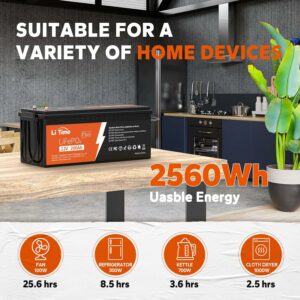
Conclusion
As technology advances, we anticipate further refinements in deep-cycle solar batteries, addressing current limitations and pushing the boundaries of efficiency.
The intersection of environmental consciousness and technological progress continues to shape the landscape of renewable energy, with deep-cycle batteries at the forefront.
In choosing and maintaining these batteries wisely, individuals contribute to optimizing their solar energy systems and the broader mission of sustainable energy utilization.
With each charge and discharge cycle, deep-cycle solar batteries embody the promise of a greener future where clean energy is harnessed and stored with ingenuity and responsibility.
Stay in Touch!
I’am a dedicated entrepreneur with many years of experience and an integrity-driven individual who is highly motivated to succeed. Leveraging extensive expertise in manufacturing, construction, and various trades, we can provide a solid foundation for sustainable living. Our meticulous research process guarantees that our information about each product is precise and current, allowing you to make informed decisions. A deep understanding of business operations empowers me to consistently implement improvements that result in ongoing success. Visit site.

